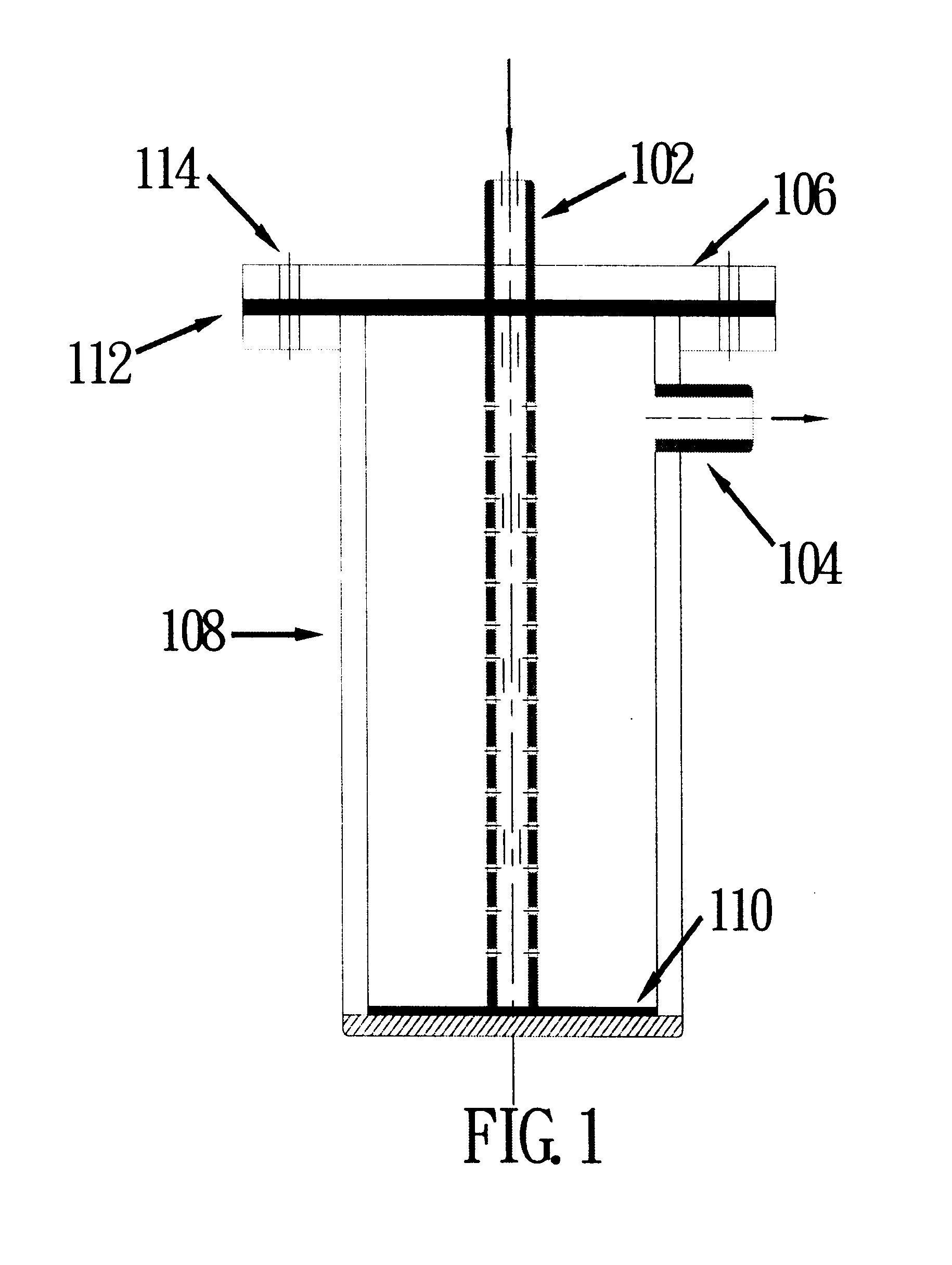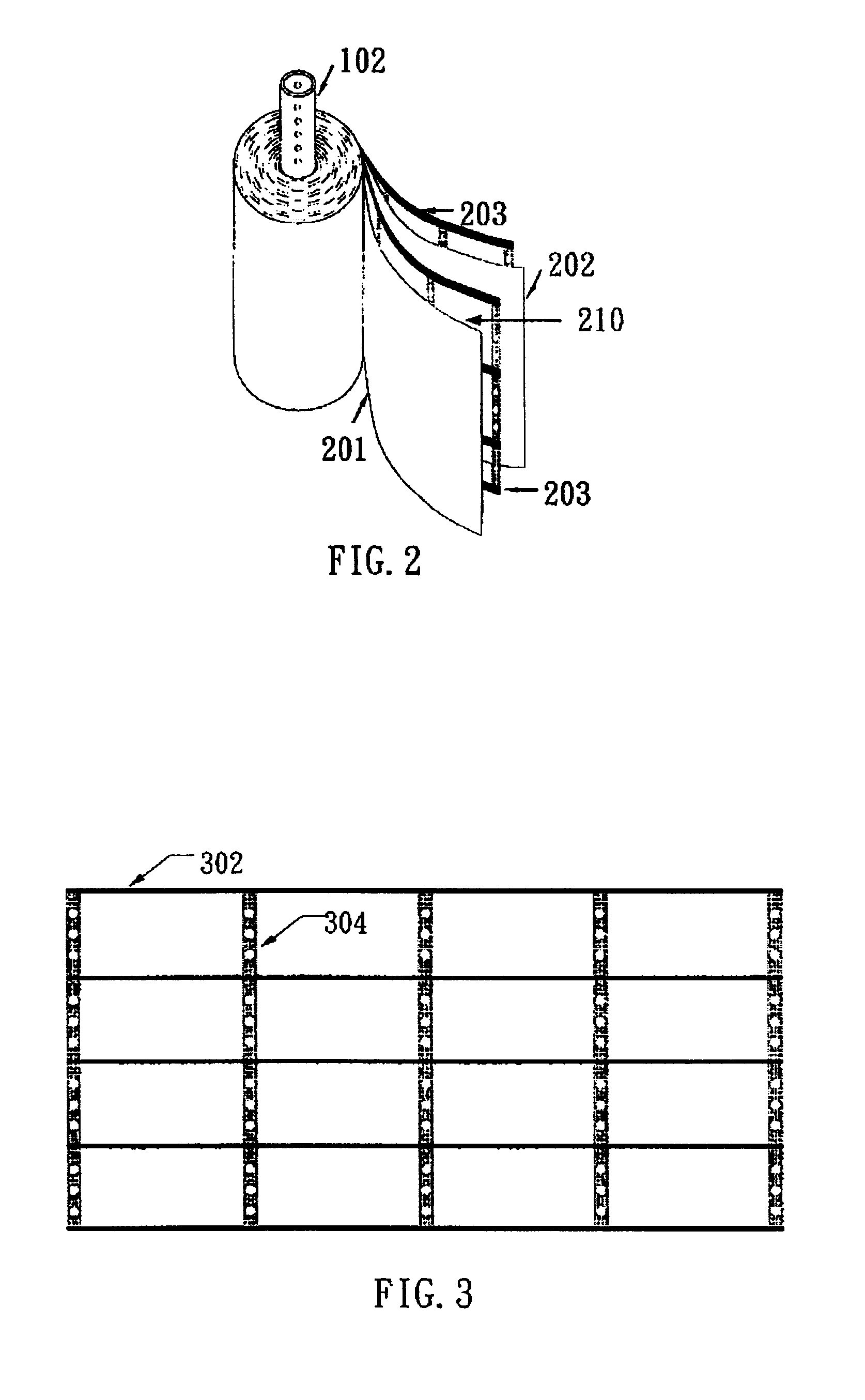Replaceable flow-through capacitors for removing charged species from liquids
a flow-through capacitor and charge-free technology, applied in the direction of wound capacitors, fixed capacitors, separation processes, etc., can solve the problems of affecting the health of people, affecting the quality of life of people, and costing governments millions of dollars to clean polluted sites
- Summary
- Abstract
- Description
- Claims
- Application Information
AI Technical Summary
Problems solved by technology
Method used
Image
Examples
example 2
Using deionized water, the used FTCs from experiment 1 are flushed till the effluent showing low conductivities (in single digits of .mu.S). The regenerated FTCs are then applied in the following test.
Liquid: CuSO.sub.4 aqueous solution with conductivity of 1420 .mu.S
Liquid flow rate: 50 ml / min
Number of cartridge: 2
The conductivity of the first 50 ml collection of effluent is measured as 724 .mu.S indicating a 49% removal of ions as the fluid simply flows through the capacitors under a very low voltage.
example 3
Similar method of regeneration as example 2 is used to prepare FTCs for desalination. Seawater is obtained from a creek to the Pacific Ocean at the west coast of Taiwan. In compliance with the measuring limit of our conductance meter, the sample is diluted 50 times using deionized water. It is estimated that the sample has a TDS (total dissolved solids) of 20,000 ppm. Without any further pre-treatment, the diluted liquid is deionized as follows.
Liquid: diluted seawater with conductivity of 793 .mu.S
Liquid flow rate: 50 ml / min
Number of cartridge: 2
The conductivity of the first 50 ml collection of effluent is measured as 619 .mu.S, accounting for a 21% removal of ions. Comparing to the same number of cartridge in example 1, the current case appears to be inferior in deionization. This is probably due to a more complex composition in seawater than that in a NaCI solution.
example 4
A composite powder, Fe.sub.3 O.sub.4 / C, is made by incorporating activated carbon in the amount equivalent to 20% by weight of Fe.sub.3 O.sub.4, which can be synthesized in a batch, with the starting materials for a sol-gel preparation. As in example 1, paste of the composite powder is formulated to fabricate the FTC and assembly for purification of a brine water.
Liquid: NaCI aqueous solution with conductivity of 1082 .mu.S
Liquid flow rate: 50 ml / min
Number of cartridge: 1
The conductivity of the first 50 ml collection of effluent is measured as 779 .mu.S, representing a 28% removal of ions as the fluid merely flows through the single capacitor. As the activated carbon provides more surface area than Fe.sub.3 O.sub.4 does, FTC yields a higher deionization rate from using the composite than the straight metal oxide. Such observation is consistent with the theory of energy storage of supercapacitors. From the aforementioned examples, it is obvious that the present i...
PUM
| Property | Measurement | Unit |
|---|---|---|
| diameter | aaaaa | aaaaa |
| diameter | aaaaa | aaaaa |
| height | aaaaa | aaaaa |
Abstract
Description
Claims
Application Information
 Login to View More
Login to View More - R&D
- Intellectual Property
- Life Sciences
- Materials
- Tech Scout
- Unparalleled Data Quality
- Higher Quality Content
- 60% Fewer Hallucinations
Browse by: Latest US Patents, China's latest patents, Technical Efficacy Thesaurus, Application Domain, Technology Topic, Popular Technical Reports.
© 2025 PatSnap. All rights reserved.Legal|Privacy policy|Modern Slavery Act Transparency Statement|Sitemap|About US| Contact US: help@patsnap.com



